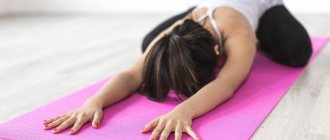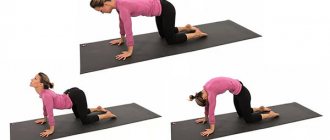Boxing is one of the most popular and beloved sports all over the world. Everyone knows the legendary names in boxing: Muhammad Ali, Mike Tyson, Joe Frazier, Roy Jones Jr. The beloved movie “Rocky” gives unprecedented appeal to such a “rough” sport. Every boy watches the fights of titled boxers with bated breath and tries to imitate them.
It’s good when you have the time and opportunity to visit a gym or a special section. But what to do if there is simply no such opportunity, but there is a great desire to become no worse than famous athletes? Of course, you won’t be able to become a full-fledged boxer without a coach, just as you won’t be able to enter the professional ring. But it is definitely possible to achieve certain successes. First, you can start learning the basic rules.
It is believed that boxing is a sport that is available to everyone, subject to desire, presence of fortitude and will. If you are unable to visit the gym, you can always use the instructions of experienced trainers. You can also purchase a tutorial with detailed pictures or a book of famous boxers of the past and present. Do not forget that we live in the 21st century and mobile applications with various trainings have long been popular. The main thing is your desire!
The most important thing to remember: when exercising at home, you need training frequency, self-discipline and perseverance. In this case, you are guaranteed progress in mastering boxing.
Who said you can't learn this at home?
Still from the film "Warrior"
Even for beginner adults, boxing is a great hobby and fitness idea to keep fit. And, without a doubt, the best way to master this type of martial art is to find a good trainer who will create a training program for you and will help you improve your technique during the learning process.
Unfortunately, not everyone has the opportunity to attend classes in the gym. But, fortunately, this does not mean that you should abandon this idea, because boxing training from scratch can be done at home.
What do you need to know if you decide to train on your own, what nuances are important to remember, and what can you learn? Let's talk about everything in order.
MUSCLE RELAXING EXERCISES
These exercises are used in boxer training as distractions, used immediately after strength exercises, as well as in the final part of the session. They promote the ability to relax muscles as much as possible to rest after strenuous efforts (Fig. 108).
Exercises to relax the muscles of the arms and shoulder girdle
- Standing or walking in a circle:
a) shake your hands from different positions;
b) shake your shoulders, lower your arms freely and relax your shoulder girdle.
Exercises to relax the trunk muscles
- From a standing position, arms to the sides:
a) sharply relax the muscles of the back and shoulder girdle;
b) tilt your torso forward and make free swinging cross movements with your arms. The legs bend and straighten with each swing movement.
Leg muscle relaxation exercise
- Standing on one leg, placing your palms on your waist, shake your free leg as relaxed as possible.
Why boxing?
Boxing inspires, motivates and is often the basis of stories of underdogs for whom the decision to start training was a turning point. Yes, you yourself can probably immediately recall many classic Hollywood films about boxing. So why is it so popular?
In its simplest form, boxing is an inexpensive sport that is easy to get into (unlike, for example, Formula 1); You can train for free alone without equipment, practicing shadow boxing, sparring with a friend, or hitting a heavy bag that you hang in your own garage.
EXERCISES TO DEVELOP FLEXIBILITY
A boxer's agility largely depends on the flexibility of his body, that is, on increased joint mobility. Therefore, stretching exercises that promote the development of flexibility should be given a significant place in a boxer’s gymnastics.
All these exercises are based on movements with large amplitude.
A set of stretching exercises should include movements for different parts of the body (Fig. 110).
Exercises to stretch the muscles of the arms and shoulder girdle
- Standing or walking in a circle, arms to the sides, fingers clenched into fists:
a) bend and straighten your arms at the wrist joints up and down;
b) rotate the brushes;
c) make springy movements back with straightened arms;
d) bend your arms at the elbow joints (in the horizontal plane) and straighten them, moving them to the sides and back.
- Standing or walking in a circle with your arms at your sides:
a) bring and spread the shoulders in the anterior-posterior direction;
b) move your shoulders up and down;
c) make circular movements with your shoulders.
- Standing or walking in a circle, arms bent, elbows out to the sides: alternate smooth circular movements with open palms in a horizontal plane around the head. In this case, each palm facing the floor, starting to move backward, goes around the head from behind and moves forward on the other side.
Neck muscle stretching exercises
While standing or sitting, tilt your head in the anterior-posterior or lateral directions and make rotational movements with your head. The same with the resistance of your own hands or the hands of a partner placed on the head.
Trunk muscle stretching exercises
- Standing, arms down, legs apart, step width apart
a) tilt the body to the maximum, alternately to the sides (the hand with the same name on the side of the tilt slides down along the thigh, the opposite hand slides up along the body);
b) alternately tilt the body to the sides (the arm on the same side of the tilt is bent behind the back, the other - behind the head or above it.
- Standing with your hands together above your head, make slow circular movements with your torso.
- With your legs spread wide apart and your torso tilted forward, alternately reach with your palm to the toe of the opposite leg (with a rotation of the torso).
- Sitting, grasping your straightened legs with your hands from below above the knee joints, tilt your torso forward, trying to touch your legs with your head.
- "Bridge".
Leg muscle stretching exercises
- Standing, arms down, feet together:
a) bend your torso forward, touching the floor with your palms (legs straight);
b) lift each yoga leg in turn, bent at the knee, grabbing it by the shin and pulling it to the chest.
- Standing on one leg, make swinging movements forward with the other. At the moment of swinging the leg forward, the opposite hand touches the toe with the palm, the other hand bends at the elbow joint or the straight one is pulled back.
- Sitting:
a) bend each leg one by one, grabbing it with your hands and pulling it towards you;
b) simultaneously bend your legs, grabbing them by the shins and pulling them towards you.
The benefits of boxing
Research from Ultimate Fitness Workout has shown that boxing workouts are one of the best ways to burn calories. On average, in just 30 minutes of regular sparring with a partner or a punching bag, a person can burn up to 400 calories. The high intensity of such workouts burns fat well, improves the functioning of the cardiovascular system, and does not put as much strain on the joints as, for example, running.
In addition to the physical benefits, boxing improves your focus by forcing you to constantly think about the technique of your punches. Boxing training also helps develop self-confidence when you can learn a few techniques.
Another huge plus that should not be forgotten is the fight against stress (and who doesn’t have that now?). When you give your body a lot of physical activity, you get a boost of endorphins - the best stress fighters.
And finally, boxing teaches the basics of self-defense, which can save your life in a critical situation. However, we advise you not to rely too much on this point, because attackers on the street are not used to playing by the rules, and you are unlikely to get the opportunity to fight a fair fight with them.
So let's learn boxing for the other benefits we talked about above (and add to that list the fact that it's just awesome).
Progression and first results
If you exercise regularly, then over time the body gets used to the same loads. Therefore, it is better to periodically complicate the task for yourself or add variety to your training routine.
Photo: istockphoto.com
To add intensity to the session, the instructor advises doing the exercises faster and more often. Another great option is to gradually increase the time in rounds from 1.2-2 to 3 minutes and try to make more strikes. And another life hack will help add variety, which requires more serious investment.
Gregory:
You can hang equipment at home - a boxing bag - and hit it with gloves. This is a different level in quality and load. For progression, many lessons and techniques can be offered. In general, they are similar, but if you train for a month three times a week, then you will already acquire skills and feel the results.
The weaker sex that will knock you out
It's nice to see progress in all endeavors, but in sports it is only possible with regularity. Make boxing a regular hobby and you will feel your body, strength and even your emotional state improve.
Essential Equipment for a Beginner Boxer
Before you start learning your first shots, it's a good idea to get yourself the right equipment. This doesn't mean you need to go out and buy the best products at a boxing store right now, but if boxing becomes your passion after a few trial sessions, it's worth investing in quality equipment that will last you a long time.
This can be an expensive purchase, but remember that your gear is an investment in a new hobby. While this isn't a complete list of everything a new fighter needs, below we've listed the essential pieces of equipment that will help you in your training.
Bandages
They are used to protect the knuckles and hands under gloves. Wraps are usually made of cloth and will take some practice before you get the hang of wrapping them properly.
Boxing gloves
Every boxer needs his own gloves. There are different sizes and types of gloves - for sparring, competitions and so on. In a sports store, salespeople will probably be happy to tell you about the models they have and help you make the right choice.
Boxing shoes
Boxing boots are usually high top and provide good traction in the ring. They are designed to support your ankles and help keep your feet from slipping during exercise. Please note that these are specialized shoes and are not suitable for running or other cardio.
Helmet and mouth guard
These pieces of protective equipment for novice boxers are essential when working in sparring. However, if you are going to learn the techniques at home and alone, it is wiser to postpone purchasing them until the time when you are ready to practice in pairs.
Pear
A good heavy bag will help you work on your punching power, footwork, and endurance. There are a lot of offers on the market of different quality, prices and types. The cheapest pears that we were able to find in online stores cost about 500 rubles, and the top price, as you might guess, can reach several thousand (and not only rubles, but also dollars).
If you do not have the opportunity to place a large pear at home or in the garage, you can purchase a so-called pneumatic pear
, which is much smaller and helps to practice the speed of strikes.
Another alternative is boxing pads.
, but to train with them, you will need a volunteer who agrees to wear them (reassure him that it is absolutely safe, and he will not feel your blow in them. Almost).
Jump rope
Yes, yes, it is the best cardio tool for any fighter. And quite budget-friendly. It will help you increase your endurance, and at the same time the chances of getting injured when working with it are minimal.
EXERCISES TO DEVELOP SPEED
The development of general speed is carried out in general physical training classes.
Run
Running is the main exercise that develops overall speed. Short runs, 40-60 m each, while training a boxer on the road are excellent for developing speed.
Sport games
Various sports games develop the qualities necessary for a boxer: mobility, orientation, agility, resourcefulness, and speed of action.
Particularly useful are games of handball, basketball, football, volleyball and hockey in winter.
Using sports games in training, boxers can play in two teams or use individual technical and tactical elements of the game: dribbling and passing the ball, tactical combinations, etc. A special place in sports games for a boxer is occupied by table tennis - a game that requires quick reaction.
Exercises with a jump rope
Performed at a fast pace (up to 130 revolutions of the rope per minute), these exercises serve as an effective means of developing speed of movement.
How to start boxing?
Boxing is a sport that anyone can learn if they have the desire and fortitude. If you are unable to visit the gym, you can use step-by-step instructions from experienced trainers, as well as videos that can easily be found on YouTube.
You can also buy yourself a tutorial with pictures, which provides boxing lessons for beginners at home. Or find a book written by one of the famous boxers. And since we live in the most progressive century, you can learn boxing using one of the special mobile applications.
Whatever path you choose, having decided to start training on your own from scratch, the key to your success will be frequency of training, self-discipline and perseverance, because progress may be slower than when training with a trainer.
But, as they say, the one who walks will master the road, and we are ready to give you some tips that will be useful during your training.
Boxing Basics #1: Start by Mastering Your Stance
Video expertboxing, youtube.com
Before you strike, you need to perfect your position. There are several different types of stances, but for the absolute beginner the best job is one that is balanced for both offense and defense.
A good stance starts with placing your feet about shoulder distance apart, with your dominant foot in the back and the other in front. Imagine a line going down the middle of your body.
Your feet should be on either side of this line, with the heel of your dominant foot touching it, pointing forward, and your other foot touching it with your big toe.
Your defensive posture should protect your face and body from being hit, depending on where the enemy is aiming. Standing directly in front of him is not a good idea because it gives him more targets to hit.
Boxing Fundamental #2: Use Your Legs
Footwork is just as important as stance, so make sure you have a good understanding of how to move your feet. You must learn balance so that you can move easier and faster both forward and backward. Keep your feet wide apart, but not too far apart or too close to each other.
Boxing Essential #3: Learn Your Punching
In boxing, there are four basic punches that you need to learn to be effective in the ring. These are jab, cross, hook and uppercut.
Jab
This direct strike is the most basic. It leads in most combos and can be used to knock out an opponent. While standing in the correct position, the jab is thrown with the front hand, which is not your dominant hand.
Video expertboxing, youtube.com
Cross
This is another straight punch, but it comes with your dominant hand and is stronger than a jab. Use it to finish a combo or throw your opponent off balance.
Video expertboxing, youtube.com
Uppercut
It uses both hands and is applied from below. It is used to hit the opponent's chin and is a great punch for finishing combos and knocking out.
Video expertboxing, youtube.com
Hook
This stroke uses either bent arm without a swing. It is effective because it is the most powerful among the basic ones. The main condition is not to open up while applying it, so as not to risk receiving a retaliatory blow from the enemy. Many professional fighters use the hook as a finishing blow.
Video expertboxing, youtube.com
Combinations
Combos come in different forms. They often start with a jab and then connect with a cross and hook in quick succession. There are many variations, but this is one of the most fundamental combos that most new fighters learn.
Boxing Fundamental #4: Don't Forget Defensive Techniques
Boxing is not just about hitting your opponent. Don't forget that he will also hit back, so you need to learn defensive techniques as well. A good training program includes both offense and defense. When you defend yourself, you use all parts of your body: arms, head, torso and legs.
One of your main defenses is your hands - they can cover you, so use them to parry blows. You can block your opponent's blows by placing both hands in front of your face so that they take the blows. You can also block your body.
Think of it like sword fighting. Your hands are like a sword and shield, use them to block other people’s “weapons” and attack yourself.
Boxing Essential #5: Try Sparring
While you may want to limit your training to shadowboxing, if you want to make significant progress, it's important to put your newfound skills into practice with a sparring partner. Sparring allows you to understand what it is like to fight with a real opponent.
There are several different types of sparring techniques, each designed to work on different aspects of boxing.
For example, sparring, in which a partner in special sparring pads will allow you to work on your punching power, footwork and hand speed. A low contact sparring session will help work on ring presence, movement ability, footwork and body movement. And full contact sparring is a great way to simulate a real fight and allow you to summarize your knowledge.
But!
Such sparring at home without proper preparation is a bad idea. So if you want to try them out, then after some time after training on your own, you will still have to go to the gym to hone your skills and do double battles.
EXERCISES TO DEVELOP ENDURANCE
General endurance develops as a result of constant, systematic exercise. These include various sports-auxiliary exercises performed at a rapidly changing pace and for a relatively long time. Their goal is to expand the athlete’s functional capabilities.
Run
Medium and long distance running is the best exercise for developing overall endurance, strengthening the cardiovascular and respiratory systems. Nothing else can be a better objective indicator of overall endurance than the time shown in running a particular distance.
Long running is carried out during training on the road, i.e. on the day of general physical training. Running like this usually ends a set of exercises on the road.
Traveling on skis
Skiing is rightfully considered the most healthy winter sports exercise. A ski trip in the fresh air strengthens the athlete’s body as a whole and makes him feel cheerful. Skiing has not only health benefits for a boxer, but also training, contributing to his overall endurance.
Swimming
The great health and practical value of swimming is undoubtedly. It harmoniously develops the muscles of the body, promotes the development of endurance, and strengthens the cardiovascular and respiratory systems.
Sport games
Sports games develop a whole range of qualities, including the quality of endurance.
Walking
Walking, carried out as sports training on the ground, is the main exercise in the system of general physical training of a boxer at all stages of his training. Long walks are the best way to achieve and maintain general physical fitness.
Rowing
Long-distance rowing is a good exercise for developing strength endurance.
Exercises with a jump rope
These exercises, performed at a fast pace and for a long time (up to 10 minutes), are excellent for developing the overall endurance of a boxer.
Warning for Beginner Boxers
An adult who decides to take up boxing to improve coordination, fight excess weight or improve his well-being should remember that high-intensity training can bring not only benefits, but also harm.
Therefore, if you are not completely sure that your body is ready for heavy loads, consult your doctor. If you experience pain, problems with coordination, dizziness or other alarming symptoms during exercise, immediately stop doing the exercises and contact a specialist.
Don't forget that exercising at home not only helps you save money, but also makes you responsible for your health. So remember moderation and be careful.
- Author: Maria Minaeva
AGILITY EXERCISES
Jumping
Jumping strengthens leg muscles and develops agility.
In boxer training, athletics high and long jumps are used, as well as gymnastic vaults over a horse, goat, etc.
While walking in the area, boxers jump over obstacles encountered along the way: ditches, streams, etc.
In the summer, on the sports ground, it is useful to include athletics jumps in general physical fitness classes. High jumps are especially useful for developing agility, the technique of which requires great ability to control your body.
Sport games
To develop dexterity in the clumsy and slow, all types of sports games are used.
Struggle
To develop agility, it is useful to give the struggle a certain direction and to focus the trainees’ attention not on strength actions, but on agility.
Exercises with a jump rope
Continuous changes in the technique and methods of jumping during exercises with a skipping rope are a strong irritant that contributes to the development of general coordination of movements. During the jumping process, you can do two jumps per one turn of the rope, for one jump - two turns of the rope, cross your arms, swing the rope from the side without jumping over it, etc. (Fig. 105).
Acrobatics
Acrobatics, a classic exercise for developing agility, can be successfully used in classes for the general physical training of a boxer. But the main value in training a boxer is the dynamic group of acrobatic exercises: rolls, somersaults, arc movements, etc.
The value of acrobatics for a boxer lies not only in the fact that it develops dexterity, but also in the fact that it improves the functions of the vestibular apparatus.
Exercises with clubs
Clubs are used in boxer training to increase the load, develop muscle strength and improve coordination of movements. Exercises with clubs are based on swinging circular movements performed in various planes and directions.
The mace must be held as shown in Fig. 106.
There are three planes of movement of the club: front (in front of the face), horizontal (parallel to the floor) and lateral (parallel to the left or right side of the body). The movements of the club can be made in these planes in any direction. The radii of circles made by a hand with a mace (Fig. 107) are divided into small (1), medium (2) and large (3). With small circles, rotation occurs in the wrist joints, with medium circles - in the elbow and shoulder joints at the same time, with large circles - in the shoulder joint. With small circles, the head of the club rotates freely in the palm, with medium and large circles, it is clamped in the palm.
Exercises can be done with one mace or two at the same time (one mace in each hand). In complex exercises, the movements of the clubs are continuously alternated in different directions and planes, thereby creating a variety of combinations that involve various muscle groups of the arms and shoulder girdle. A detailed description of exercises with clubs can be found in a gymnastics textbook.











